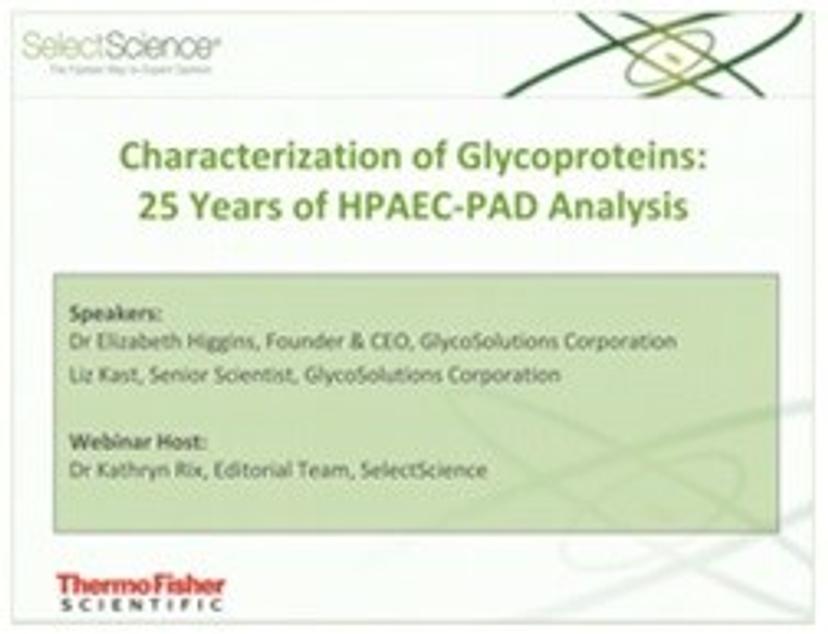Characterization of Glycoproteins Using HPAEC-PAD: Exclusive Webinar Highlights
4 Nov 2014

There are many analytical options for the analysis of monosaccharides and oligosaccharides, but this exclusive SelectScience webinar presents examples of situations where HPAEC-PAD is still the best – and sometimes the only – option to address the challenges of carbohydrate analysis.
Dr Elizabeth Higgins and Liz Kast of GlycoSolutions Corporation presented this informative webinar, the highlights of the question and answer session are provided below. To watch the webinar on-demand, click here.
1. How do you monitor the performance of the electrochemical detector?
A galactose solution is injected before and after every run to monitor the response and performance of the electrochemical detector.
2. You discussed sialic acids and Mannose-6-Phosphate. What about other negatively charged monosaccharides, such as sulfated ones in glycosaminoglycans?
Sulfated monosaccharide analysis is particularly challenging due to the nature of the sulfate, which can be lost during acid hydrolysis and compositional analysis. However, enzymatic methods can be used for disaccharide analysis for glycosaminoglycans that are similar to the separation used for O-glycans.
3. What columns are used for each type of analysis for example neutral, mono monosaccharides, sialic acids?
For neutral monosaccharides and sialic acid, the CarboPac PA1 column was used; while for the Mannose-6- Phosphate, both the CarboPac PA1 and CarboPac PA10 columns were required.
4. How large was the final peak in the CarboPac MA1 separation of the dextran that was prepped for MALDI-TOF?
The final peak in the CarboPac MA1 reached a degree of polymerization of 9.
5. Can you elaborate a little more about the sensitivity for the detection of oligosaccharide in the range of the DP6-9?
The detection was fairly sensitive but the assay presented here was not quantitative. Previously when we have carried out hydrolysis, we have looked at this by other orthogonal methods and found that there was less of the larger dextran fragments present. Relative percentage areas could be measured and we have found it to be an accurate way of measuring.
6. What matrix did you use for the MALDI-TOF mass spec analysis?
2,5-dihydroxybenzoic acid.
7. Can you perform N-linked oligosaccharide analysis by HPAEC-PAD?
HPAEC-PAD analysis can be used sometimes but it is preferable to use a fluorescence method.
8. You mentioned the importance of Mannose-6-Phosphate. What is the clinical significance of this modification for lysosomal enzyme replacement therapies?
This modification is considered to be really important for getting proteins into the lysosomes. However, I have found that there is a lack of good data showing the importance for clearance in bio-distribution out of the plasma. It is assumed to be important, but as far as I am aware it has never been proven.
9. Do you find it necessary to run O-acetylation before sialic acid cleavage?
The O-acetylation is lost during acid hydrolysis so we don’t see the O-acetylation in our sialic acid analysis.
10. Do you use capillary or analytical systems with MA1 columns or without ECG?
All work done was carried out on an analytical ion chromatography 3000 system.
11. Do you have any methods to analyze glucuronic acid?
There are many methods published in the literature.
12. You mentioned that GalNAc can indicate presence of mucin-type O-glycans. Are there any other epitopes that would contribute to the GalNAc number?
There is a LacdiNAc epitope found on Thyroid Stimulating Hormone (TSH) which would be a N-acetylglucosamine or an N-acetylgalactosamine linked to an N-acetylglucosamine that would contribute to the GalNAc number.
